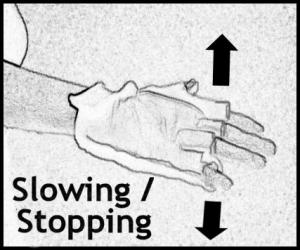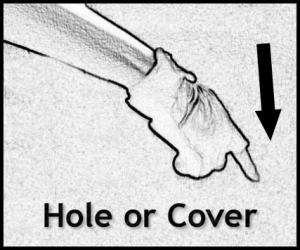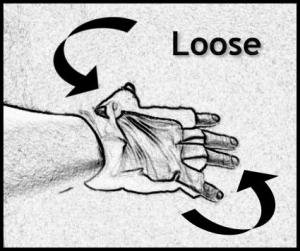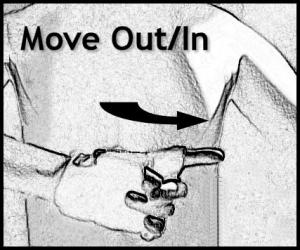When out on the road, communication is one of the keys to the safety of all riders in a group. Sometimes a shout is necessary but often a rider at the front of a group will be facing away from those behind and will use hand signals to indicate hazards or recommended actions to those behind.
Knowing what signals to use and what they mean is essential when riding in any group.
Shown below are some of the most commonly-used signals and what they mean:
HAND SIGNALS ON THE ROAD
 |
SLOWING / STOPPING A flat hand motioned up and down by a rider indicates slowing or stopping for an obstacle or hazard ahead. This is also used for approaching horses who may startle at a bunch of cyclists approaching quickly. |
 |
HOLE/COVER A finger pointing at the road indicates a pothole, cover or fixed hazard on the road surface. Used with or without a shout of 'hole' or 'cover'. |
 |
LOOSE A flat hand with fingers spread that is waved over the road surface - with or without a shout of 'loose' - indicates a loose surface (ie gravel, mud etc) that could cause loss of traction. |
 |
MOVE OUT/IN
A rider pointing or waving behind their back is indicating that riders behind should move out (or if mirrored, in) to avoid a pedestrian, parked vehicle, slower cyclist, on-coming vehicle crossing white lines etc. |
SHOUTS
It is always a good idea to 'shout out' hazards as well as indicating them. Often a rider at the back of a group will shout out 'CAR BACK' to warn the group of traffic coming up behind the group and 'CAR UP' when a vehicle behind a group is coming through.
Similarly, 'CAR DOWN' indicates to a group that a car is approaching in the opposite direction and riders (particularly on narrow roads) may need to keep tight on their side of the road.
As indicated above LOOSE is a shout indicating a loose surface such as gravel, broken tarmac, chippings or any surface that might cause loss of traction in dry weather.
'STEADY' or 'EASY' is a warning for everyone to slow down – it could be a Give Way, a road junction with car coming, a vehicle in front slowing down or just the ride leader giving stragglers or those left behind at a junction the chance to re-join the pack etc.
When turning at a T junction, 'CLEAR' is an indication that the road is completely clear in both directions. If riders are turning left, 'CLEAR RIGHT' indicates that there are no vehicles approaching from the right of the junction so a left turn is possible. BUT PLEASE NOTE: A shout of 'clear' is never ever a justification for not checking and pulling out. It is every rider's responsibility to ensure the road is clear for them. These shouts are for assistance and smooth flow NOT guidance as to what you should or shouldn't do. Cars can come round corners quickly and clear one minute might be busy when you reach the junction. 'STOP' is a command to stop at the junction because of traffic or hazards.
'PUNCTURE' and 'MECHANICAL' are two other obvious but extremely important shouts, either to warn riders behind you that you are likely to slow or to warn riders in front that you are going off the back with a problem.